By Janet Fairclough, Royal Society for the Protection of Birds, Conservation Advisor
As an avid birder, bird ringer (how we refer to banding in the United Kingdom) and conservationist, I follow a few bird observatories from around the world on Facebook, including the Intermountain Bird Observatory (IBO). Whilst on vacation visiting friends in Kuna, Idaho, I jumped at the opportunity to book into one of the wall tents at Lucky Peak for a weekend.
I wanted to experience the fall migration, hawk watch and banding operations!
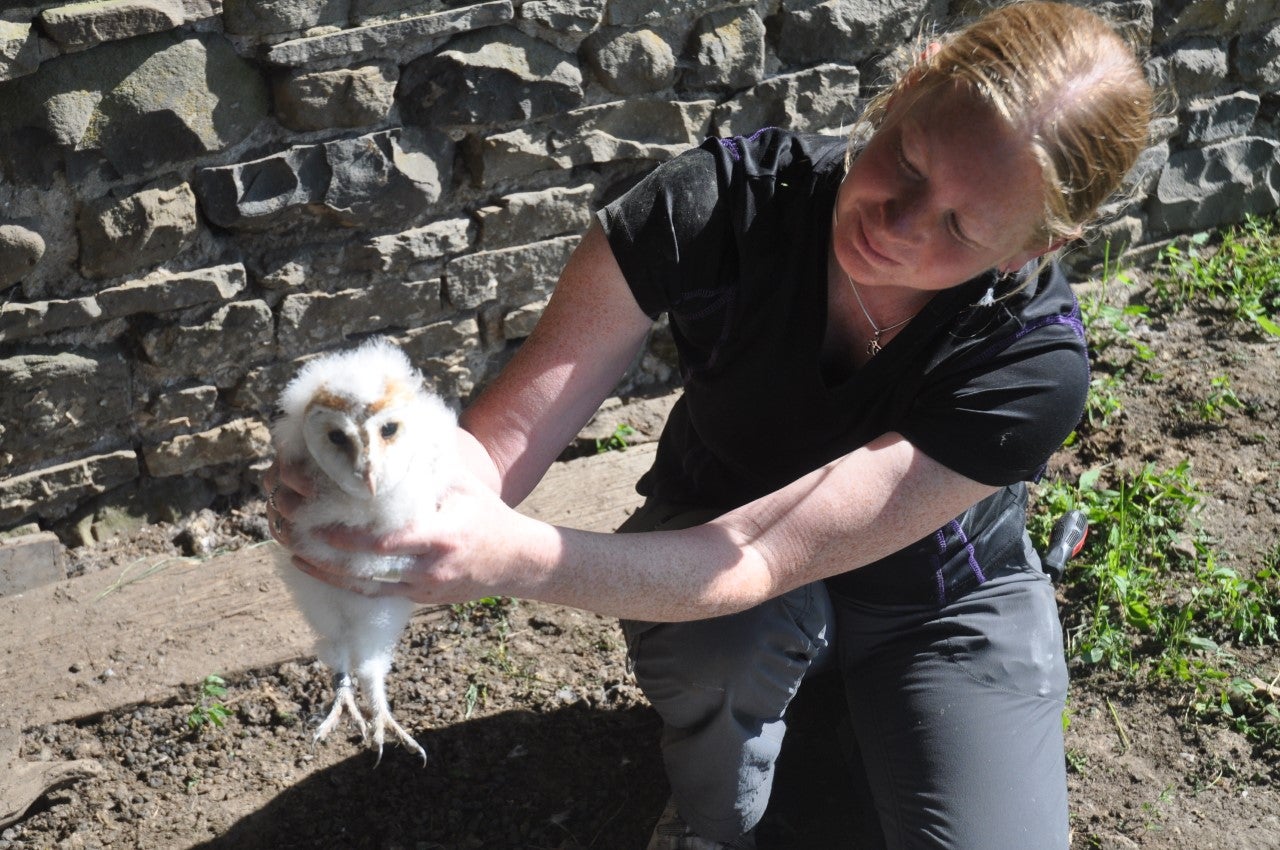
The songbird, raptor and owl crews were all extremely welcoming, friendly, and knowledgeable. I felt at home straight away and it was a pleasure to spend the weekend with everybody. This blog summarises a few of the many highlights from my weekend at Lucky Peak.
Owling: Having spent a month banding in Canada at Pelee Island Bird Observatory in 2009, I already had a fondness for Northern Saw-whet Owls, so it was wonderful to spend two evenings with the owl crew and get reacquainted with these endearing little birds. Before my visit, I had noticed on eBird that some Flammulated Owls had been banded during September, so having never seen that species before, I hoped to get lucky whilst at Lucky Peak.
I learnt that on October 1st (the day I arrived), the playback was switched to Northern Saw-whet Owl calls only, so my hopes fell.
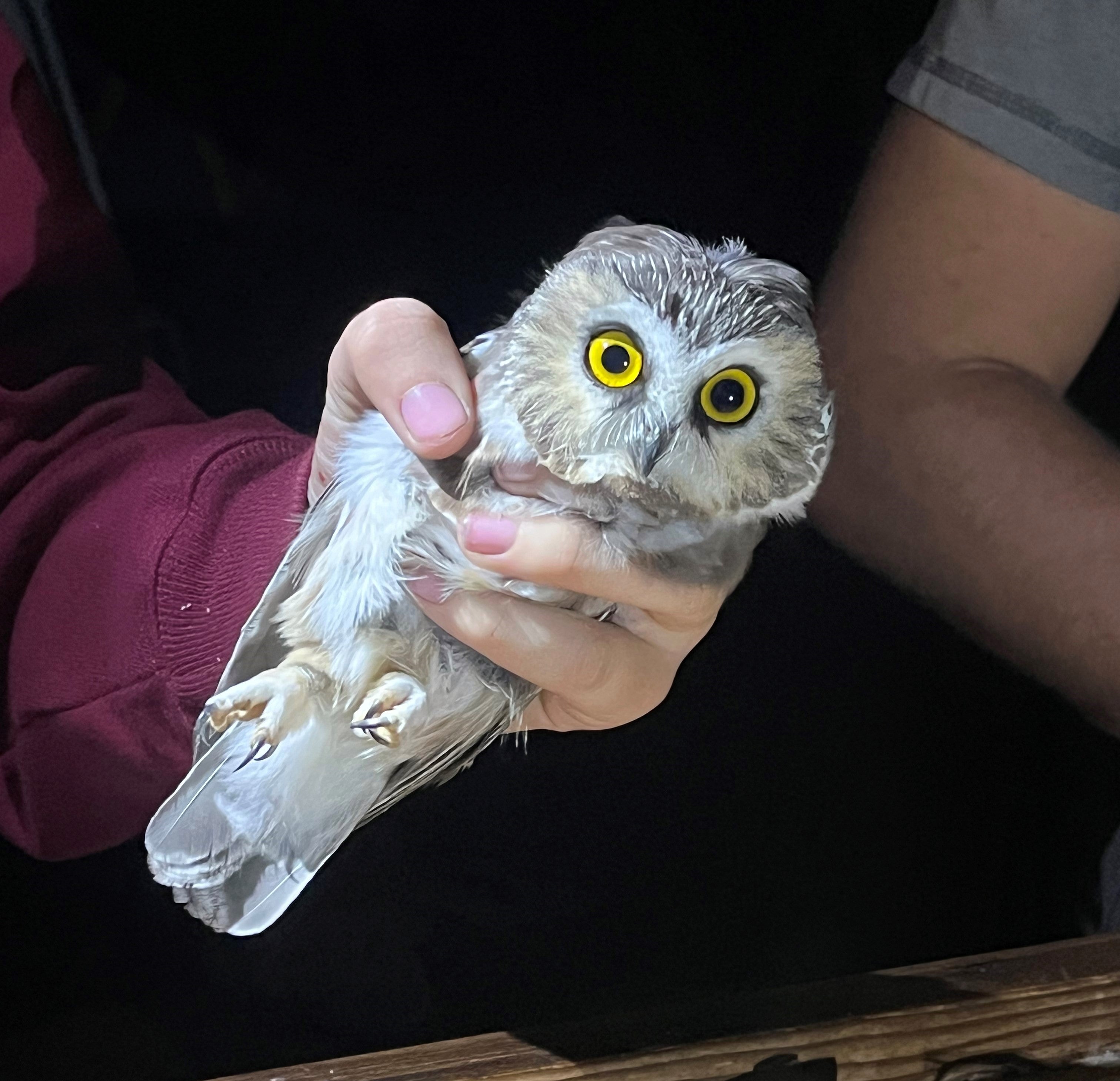
However, on my second evening, two remarkable events occurred. Firstly, on a routine check of the mist nets with Kevin we made quite the discovery.
We discovered a Great Gray Owl lying in the net, staring back at us!
Sadly, it was not caught and flew out of the net before we got to it, but it was a majestic sight as it flew away through the trees (and a new species for me after failing to see them in Finland a few years ago!). I went to bed just after midnight, as I was keen to be up in time for songbirds in the morning, but the heroic owl crew kept going all night. At about 5:00 am, Lisa kindly woke me up as they had caught a Flammulated Owl, the species I had really wanted to see.
What a remarkable night and proof that wildlife can always provide a surprise!
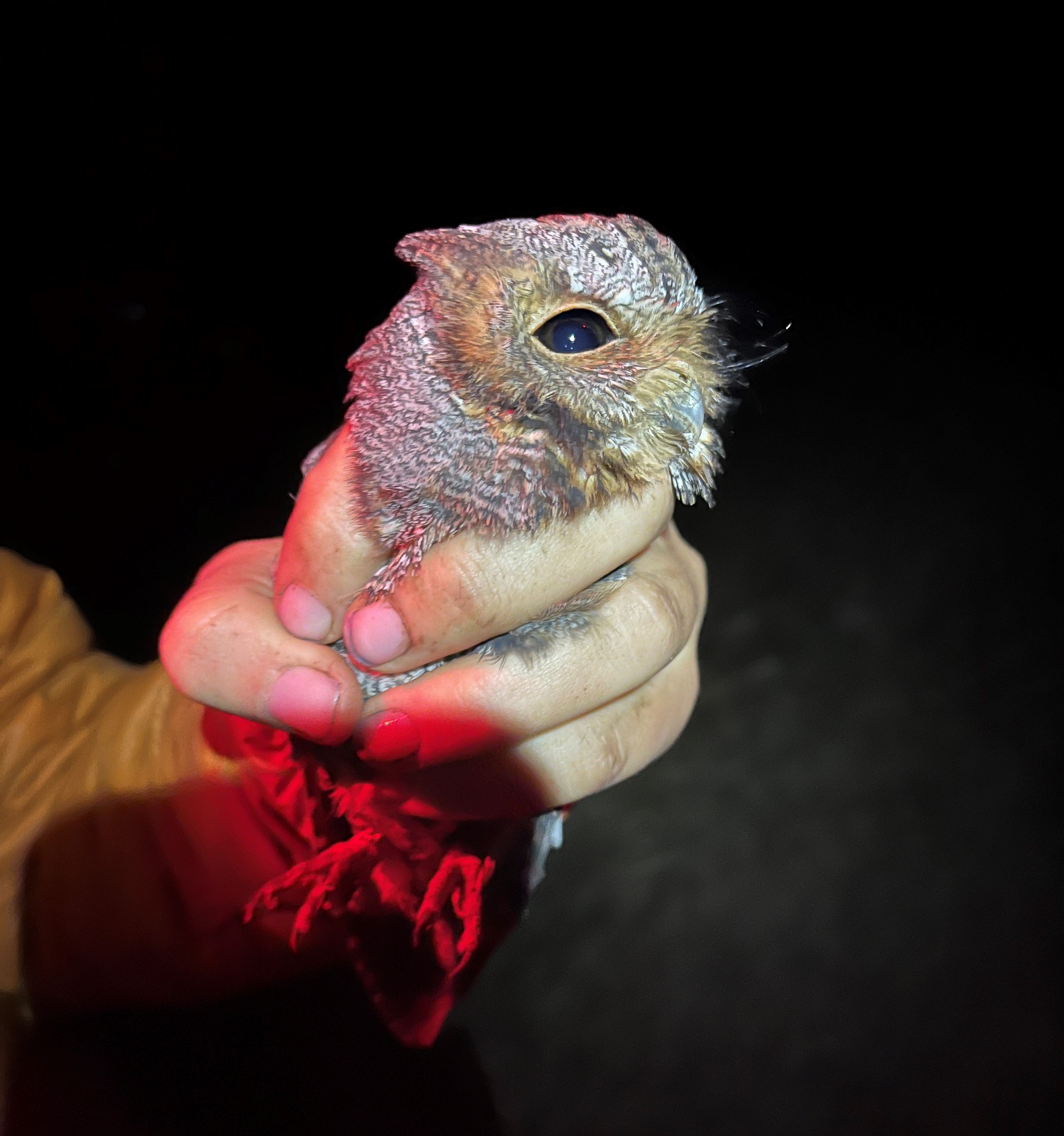
Raptors: In the UK we have resident, breeding and wintering raptors, but we are not on any major migration route, so we do not have anything comparable with the Lucky Peak hawk watch and raptor banding setup.
Whether they are soaring overhead, or in the hand for banding, raptors never fail to impress!
Not being very familiar with all of the raptors in Idaho, I was finding estimating size challenging as they were soaring distantly across the landscape, so it was great to spend time chatting with the hawkwatch crew to get more confident with identifying them. The raptor banders trapped quite a few birds whilst I was visiting, giving me the opportunity to compare both male and female Sharp-shinned Hawks and Cooper’s Hawks. I remarked how size-wise, the Eurasian Sparrowhawk I see in the UK fits in the middle between these two accipiter species; as female Sharp-shinned Hawks are roughly the same size as male Eurasian Sparrowhawks, and male Cooper’s Hawks are roughly the same size as female Eurasian Sparrowhawks.
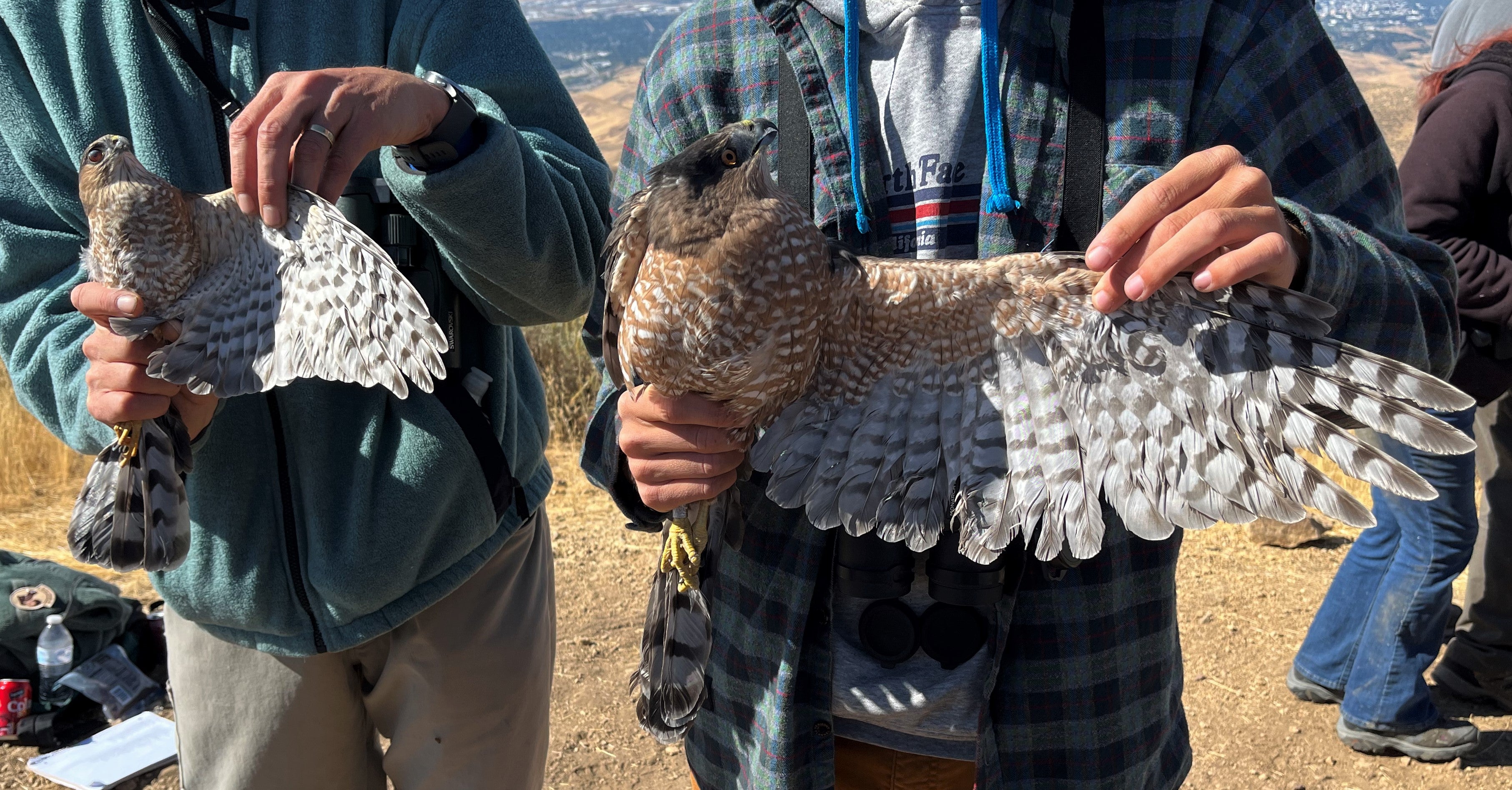
I found this to be quite fascinating!
Songbirds: I have been banding migrating passerines in the UK for over 20 years, so I was especially keen to spend time with the songbird banding crew. Whilst observing the songbird banding sessions, I thoroughly enjoyed discussing similarities and differences between species, biometrics, recording systems and the literature used to help with things like identification, aging and sexing. By the final morning, I was pleased to have gotten the hang of the recording system well enough to assist the crew by scribing for them during a particularly busy period of Ruby-crowned Kinglets.
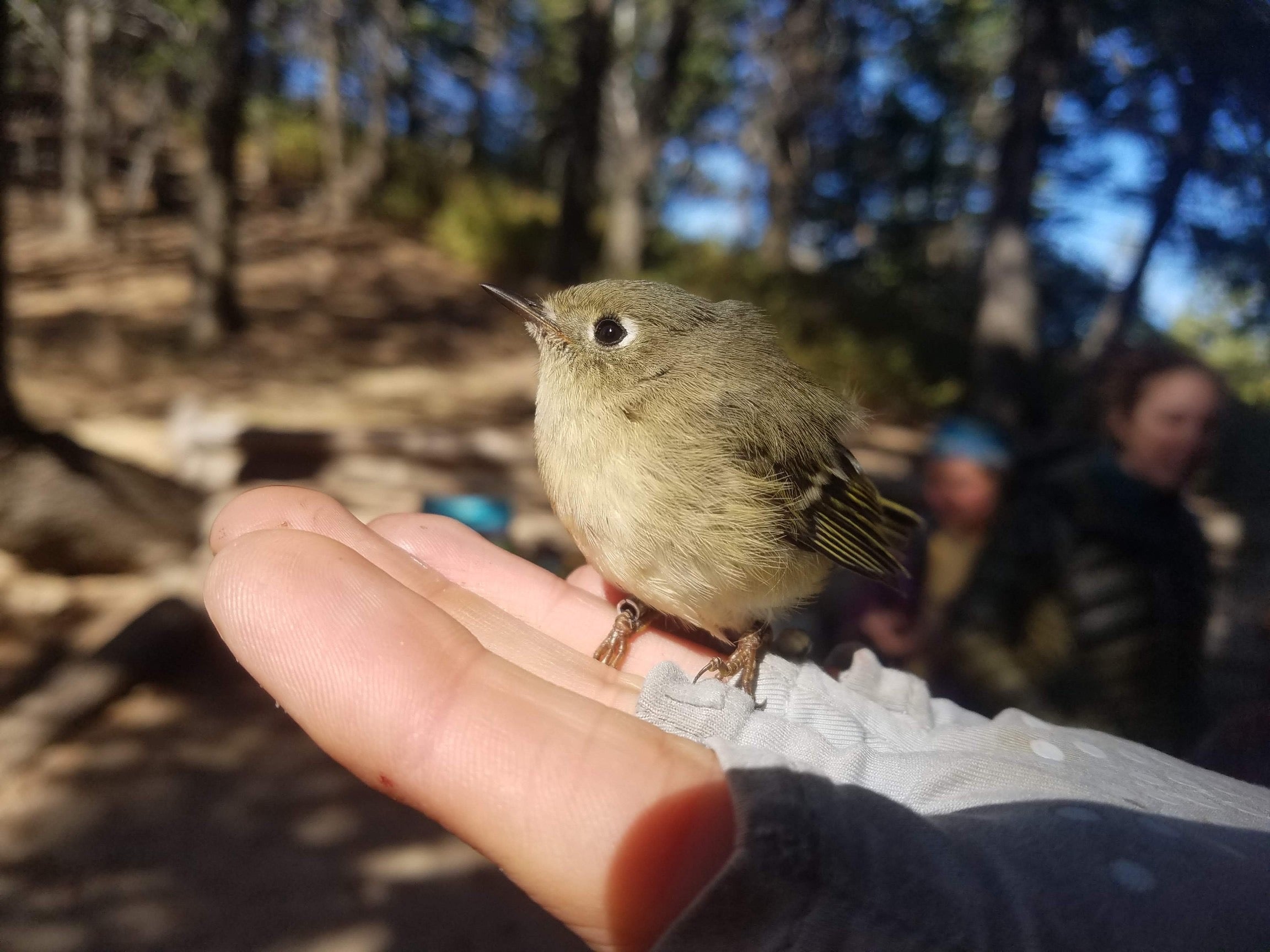
It was finally time for my friends to come collect me after the weekend.
They were very impressed that there is such a big team of dedicated people carrying out conservation work practically on their doorstep!
They also thoroughly enjoyed seeing some wild birds so close. The songbird and raptor crew cheerfully welcomed them, and the kids Elkie and Ivy were allowed to release a Ruby-crowned Kinglet each at the songbird banding station. They named the male “Tweety” and the female “Lily”! Then up at Hawkwatch, they also got to help to release two Sharp-shinned Hawks and a Cooper’s Hawk.
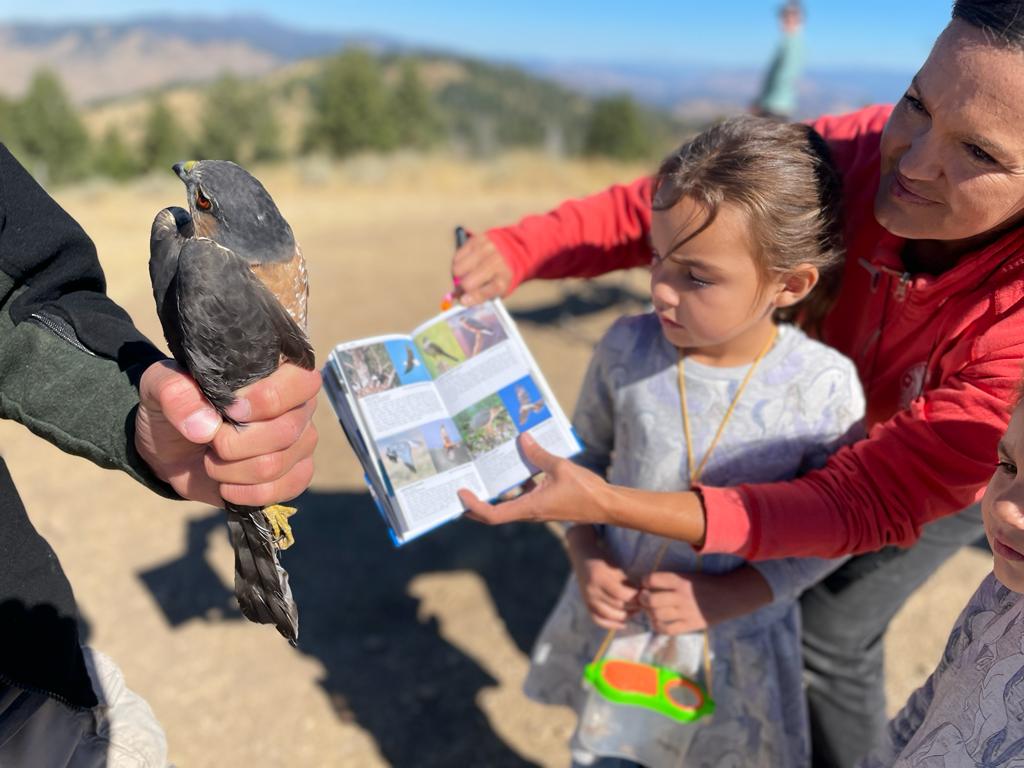
I asked them to contribute to this blog and they sent me these endearing words…
“Next time if we camp there, we might get to see an owl, I’ve never seen an owl in real life before! My favourite moment was releasing the Ruby-crowned Kinglet. “Lily” might come back to us now we’ve released her.” ~Elkie (age 6)
“My favourite bird is a Ruby-crowned Kinglet, because it was cute.” ~Ivy (age 4)
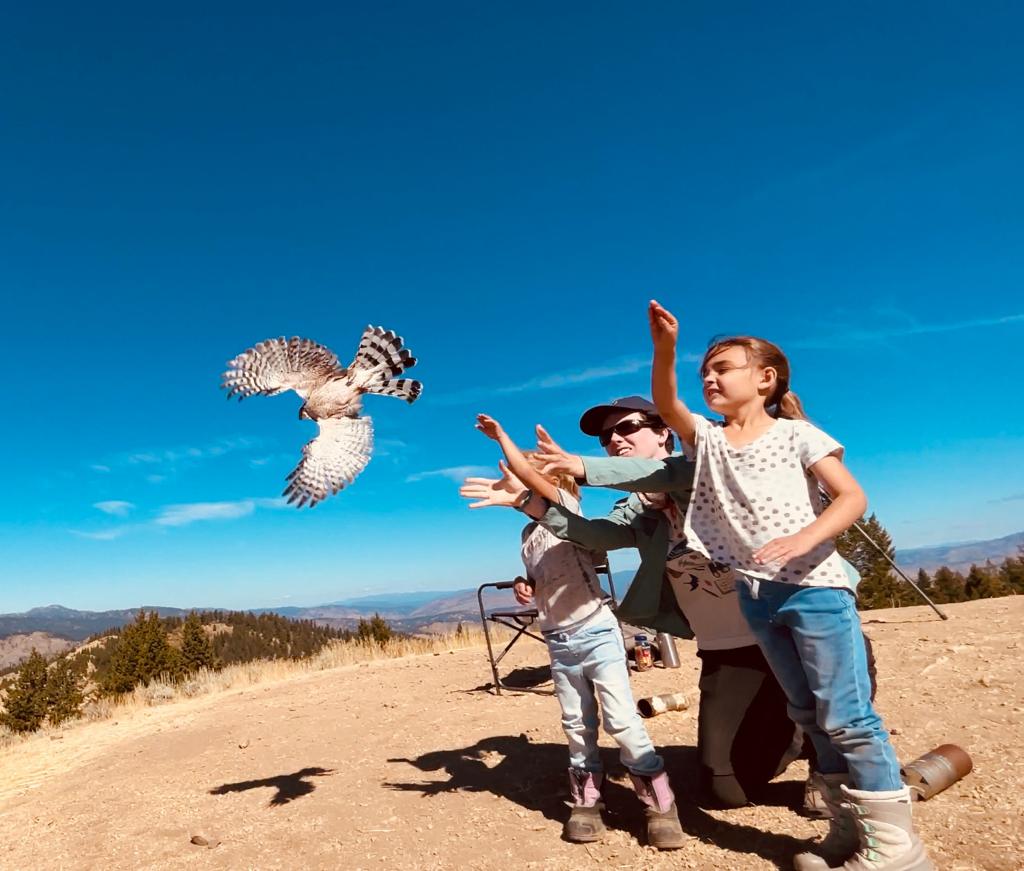
My weekend was over all too quickly.
I feel privileged to have spent some time at Lucky Peak and will continue to follow the IBO on Facebook with more understanding of the research that is being carried out and the memories of a lovely visit. Thank you to the whole crew for your amazing company and providing such a welcoming atmosphere!
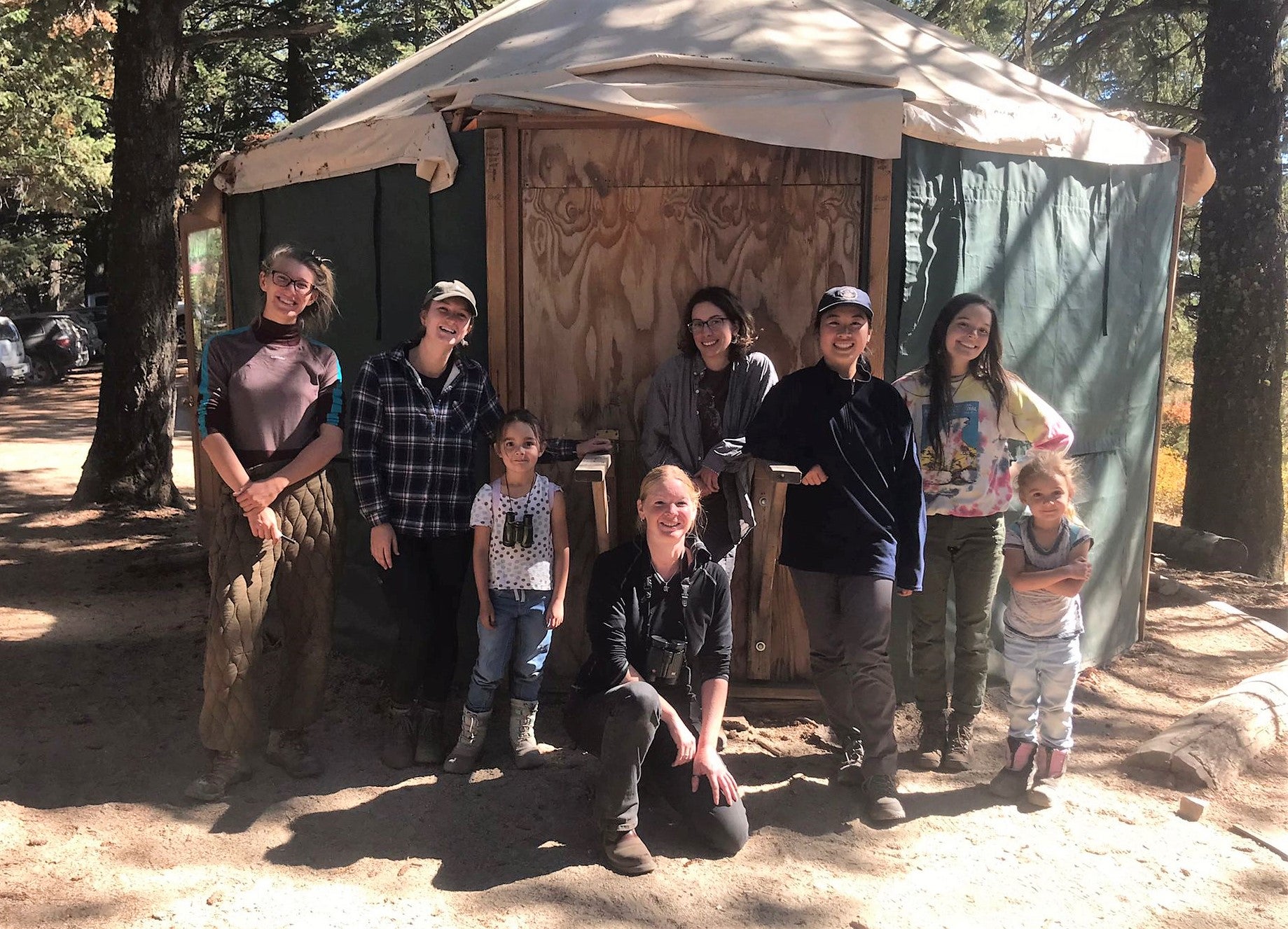
This article is part of our 2022 end of the year newsletter! View the full newsletter here, or click “older posts” to read the next article.
Make sure you don’t miss out on IBO news! Sign up to get our email updates.